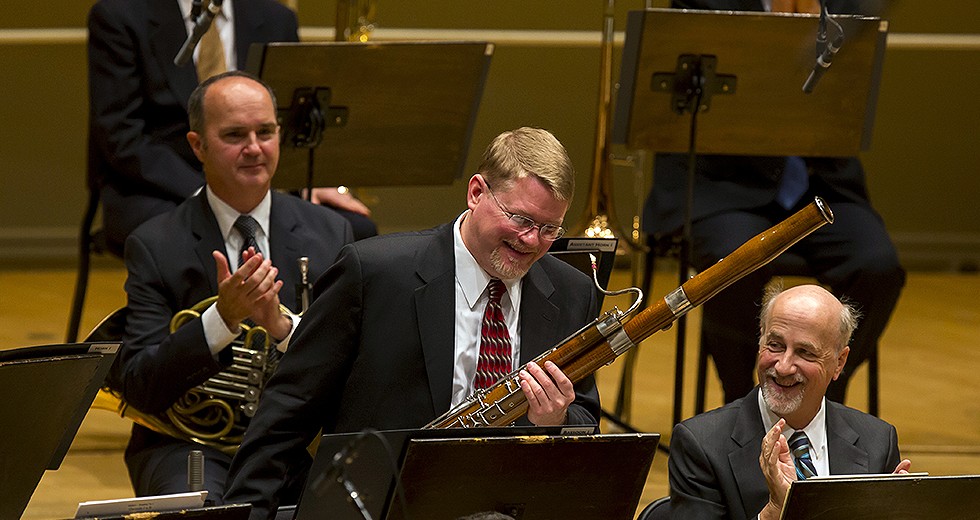
Although Mozart may have written as many as five bassoon concertos, this is the only one that has survived. It is the earliest of all Mozart’s concertos for wind instruments, and though it is the work of an adolescent, this is a little masterpiece. The score is contemporary with Mozart’s first piano concerto, in D major, and his first violin concertos, all products of the mid-1770s. These are works that show Mozart fully engaged in putting his own stamp on traditional forms and procedures; he is no longer an apprentice — even one with the most astonishing gifts — but a man establishing his own practice. Mozart would never quit learning, borrowing and assimilating what he picked up in the musical world at large, but the process of transforming and personalizing had already begun.
Even though the bassoon was not a common solo instrument at the time, the main thematic material of this concerto was carefully designed expressly for the instrument, showcasing its unique qualities and disguising its limits in power and range. In this piece, Mozart has already moved beyond mastering the general demands of concerto form to deal, in very specific and creative ways, with the individual needs of his client. Mozart often wrote music for performer-friends, but we cannot be certain for whom this concerto was intended. There are several possible candidates, including two bassoonists employed by the archbishop of Salzburg at the time, as well as Thaddäus von Dürnitz, an amateur bassoonist from Munich, who apparently had commissioned bassoon works from several composers, including Mozart. (At the CSO’s concerts June 12-17, it serves as a valedictory of sorts for David McGill, the CSO’s principal bassoon, who will leave the orchestra in August after its Ravinia residency to become a professor at Northwestern University’s Bienen School of Music.)
The first movement highlights the bassoon’s many virtues, including its extraordinary agility and the ability to trill, leap (nearly two octaves in this case), repeat notes rapid-fire, sing lyrically and sit comfortably on prominent low notes. The interaction with the orchestra is lively and conversational, not that of a star performer with its supporting cast. The second movement is a dreamy aria, with an elaborately embroidered melody over muted strings: an early essay in the mood of the Countess’ “Porgi amor” from The Marriage of Figaro. The finale is a minuet — not music designed for the ballroom, but based on the lilting rhythms of the standard courtly dance.
Phillip Huscher is the program annotator for the Chicago Symphony Orchestra.
PHOTO: David McGill (center) takes a bow during an Afterwork Masterworks concert in March. | Photo by Todd Rosenberg Photography
VIDEO: McGill discusses the Mozart Bassoon Concerto during this CSO-produced interview from 2011.